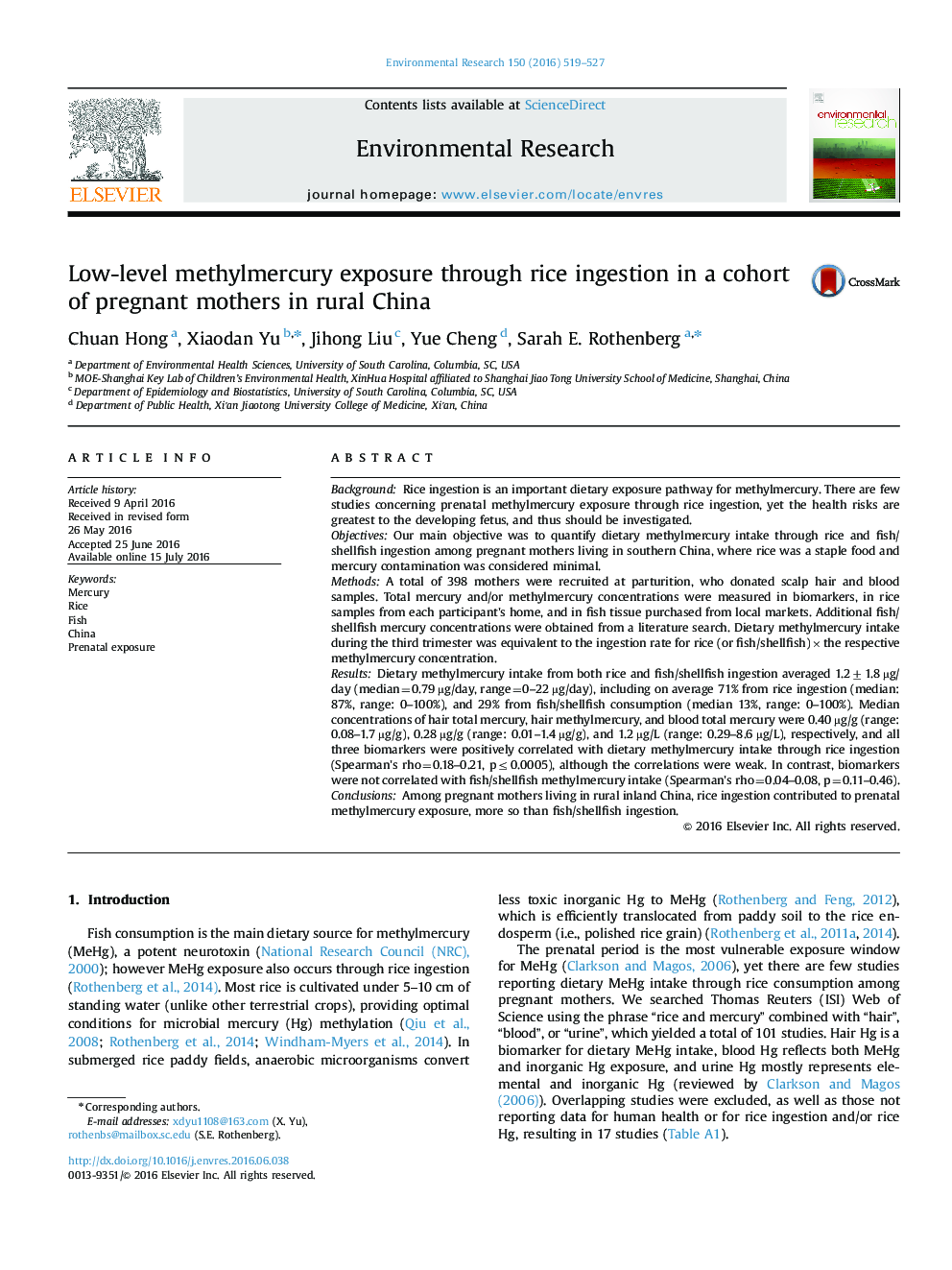| کد مقاله | کد نشریه | سال انتشار | مقاله انگلیسی | نسخه تمام متن |
|---|---|---|---|---|
| 6351044 | 1622553 | 2016 | 9 صفحه PDF | دانلود رایگان |
- We determined dietary methylmercury intake through rice & fish in rural China.
- Dietary methylmercury intake averaged 71% from rice and 29% from fish.
- Hair/blood mercury levels were correlated with rice ingestion but not fish ingestion.
- Hair/blood mercury levels were comparable to other studies among pregnant women.
- In rural China, rice ingestion was an important dietary source of methylmercury.
BackgroundRice ingestion is an important dietary exposure pathway for methylmercury. There are few studies concerning prenatal methylmercury exposure through rice ingestion, yet the health risks are greatest to the developing fetus, and thus should be investigated.ObjectivesOur main objective was to quantify dietary methylmercury intake through rice and fish/shellfish ingestion among pregnant mothers living in southern China, where rice was a staple food and mercury contamination was considered minimal.MethodsA total of 398 mothers were recruited at parturition, who donated scalp hair and blood samples. Total mercury and/or methylmercury concentrations were measured in biomarkers, in rice samples from each participant's home, and in fish tissue purchased from local markets. Additional fish/shellfish mercury concentrations were obtained from a literature search. Dietary methylmercury intake during the third trimester was equivalent to the ingestion rate for rice (or fish/shellfish)Ãthe respective methylmercury concentration.ResultsDietary methylmercury intake from both rice and fish/shellfish ingestion averaged 1.2±1.8 µg/day (median=0.79 µg/day, range=0-22 µg/day), including on average 71% from rice ingestion (median: 87%, range: 0-100%), and 29% from fish/shellfish consumption (median 13%, range: 0-100%). Median concentrations of hair total mercury, hair methylmercury, and blood total mercury were 0.40 µg/g (range: 0.08-1.7 µg/g), 0.28 µg/g (range: 0.01-1.4 µg/g), and 1.2 µg/L (range: 0.29-8.6 µg/L), respectively, and all three biomarkers were positively correlated with dietary methylmercury intake through rice ingestion (Spearman's rho=0.18-0.21, pâ¤0.0005), although the correlations were weak. In contrast, biomarkers were not correlated with fish/shellfish methylmercury intake (Spearman's rho=0.04-0.08, p=0.11-0.46).ConclusionsAmong pregnant mothers living in rural inland China, rice ingestion contributed to prenatal methylmercury exposure, more so than fish/shellfish ingestion.
Journal: Environmental Research - Volume 150, October 2016, Pages 519-527
